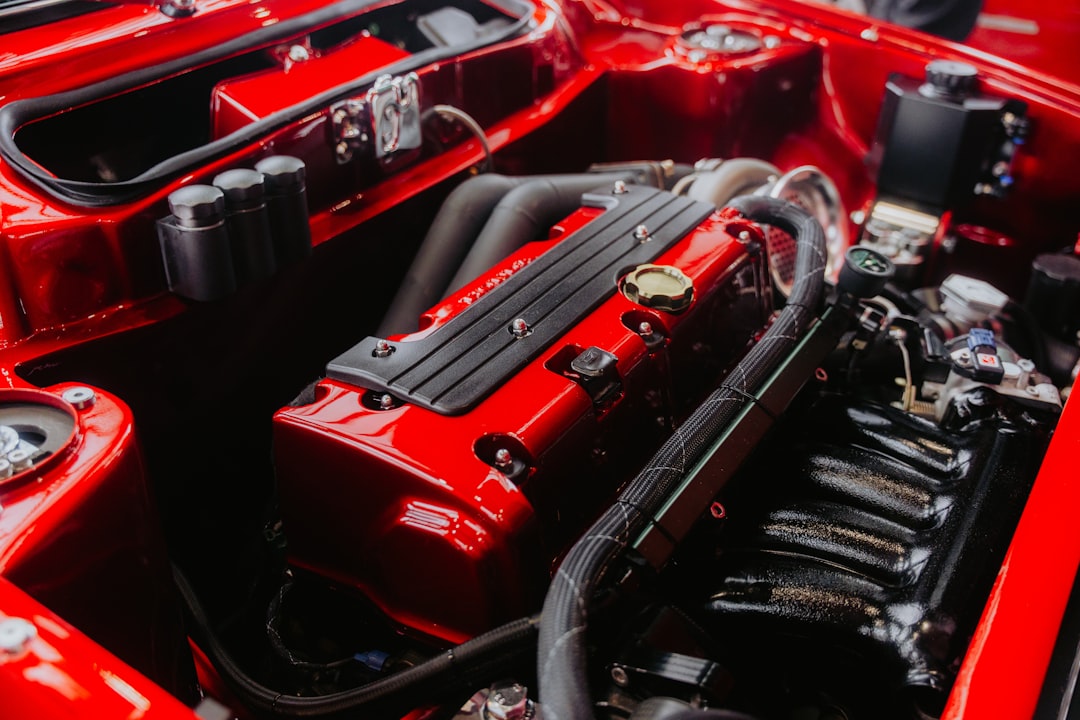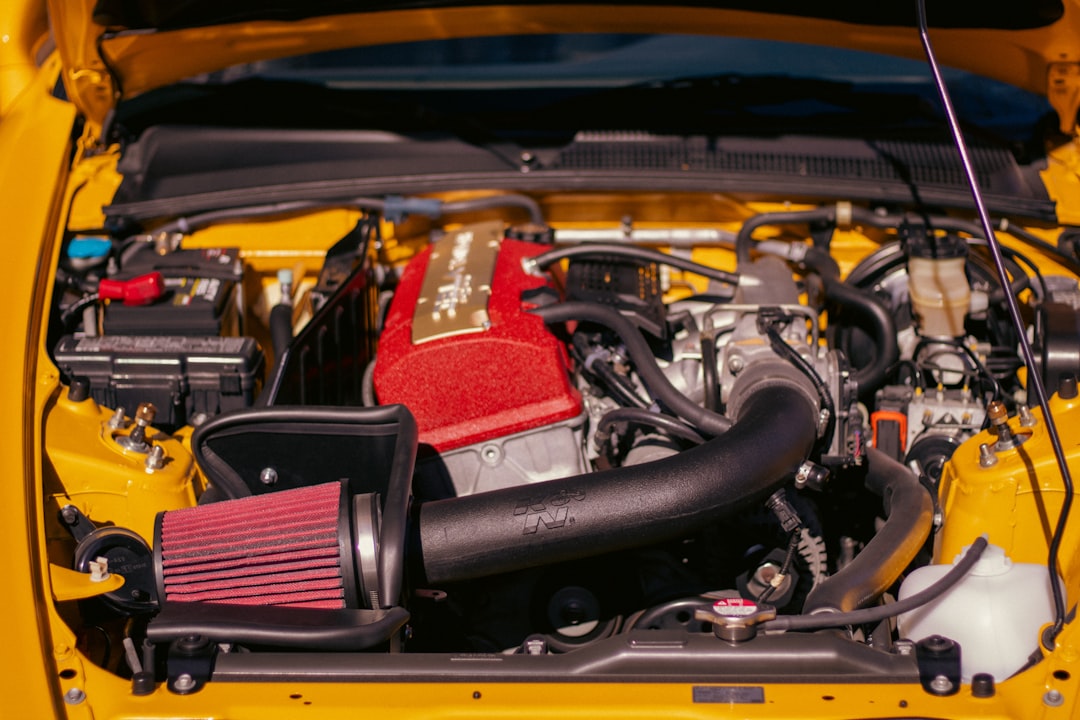

Engage prospects with a scan and streamline customer engagement with FREE QR code marketing tools by Sona – no strings attached!
Create a Free QR CodeFree consultation

No commitment

Engage prospects with a scan and streamline customer engagement with FREE QR code marketing tools by Sona – no strings attached!
Create a Free QR CodeFree consultation

No commitment
QR codes have quickly evolved from novelty to essential tools for bridging offline interactions with digital action. For auto warranty plan providers, QR codes create seamless ways to educate prospects about vehicle service contracts, extended car warranties, and specialized plans, all without requiring app downloads or technical expertise.
With rising competition among leading auto warranty providers, QR codes stand out by simplifying lead capture, differentiating offers, and delivering instant access to plan details, cost calculators, or claims support. In a high-stakes market where missing a single prospect can mean losing a deal, QR codes ensure that no opportunity goes untracked or is lost due to manual processes.
Leveraging QR technology enhances both customer acquisition and journey tracking by converting every brochure, mailer, dealership visit, or event appearance into a robust digital entry point. By capturing buyer intent at the moment of interest, providers reduce delays, stay ahead of competitors, and fill pipelines with real decision-makers rather than anonymous prospects.

The most valuable leads in the auto warranty space appear in brief moments: while a shopper reviews a vehicle history report at a dealership, when a service advisor mentions extended coverage, or when a direct mail piece lands on a kitchen table. QR codes bridge those moments to digital flows that collect contact information with QR code forms, qualify intent, and route prospects to the right next step in seconds. Instead of asking people to type long URLs or call a number, a scan invites immediate action.
Start by replacing outdated analog processes with QR-powered experiences. Printed brochures that once ended in a cold phone line can link to interactive plan comparison tools. Paper forms at events can be replaced with mobile quote forms that auto-populate fields. Manual sign-up sheets can become digital callbacks that hit the CRM instantly. These improvements speed up the journey, reduce data entry errors, and allow teams to follow up while interest is high.
A centralized QR code management platform streamlines deployment, testing, and integration with sales systems. Teams can monitor performance across dealerships, service centers, and mail campaigns, then iterate quickly on copy, design, and placement. Over time, this turns every offline touchpoint into a measurable contributor to pipeline and revenue. Start creating QR codes for free.

Auto warranty marketing is full of offline-to-online gaps. A shopper sees an extended coverage poster in a dealer finance office but forgets the URL by the time they get home. A service customer hears about an upgrade but leaves the dealership before asking for details. QR codes close those gaps by putting the action within a scan’s reach. Instead of passive awareness, you create an instant digital bridge to quote forms, coverage overviews, or a call scheduling page.
Speed and simplicity also matter. No one wants to download an app or search for a product page in the middle of a busy day. With QR codes, prospects can quickly explore plan options, view a sample contract, or check eligibility in less than a minute. That speed translates into more completed forms and more qualified conversations for your team.
These advantages align perfectly with common materials used in the industry. Add codes to finance office posters, add-on menus, and service center receipts. Include them on direct mail offers for expiring factory warranties. Print them on point-of-sale displays at used car lots. Every new placement becomes a measurable channel that feeds your pipeline.

Not all QR codes are the same. Auto warranty plan providers can mix formats based on the task at hand, then optimize destinations based on customer intent. A well-chosen format will shorten the path to value while capturing the data your team needs.
Dynamic web link and form QR codes provide the greatest flexibility and trackability for this vertical. Use static codes only for unchanging resources, such as a PDF explaining coverage tiers. For most campaigns, dynamic codes let you A/B test destinations, add UTM parameters, and switch offers in response to performance without reprinting collateral.

Untapped growth often hides in existing physical touchpoints. Every dealership visit, service appointment, or mail drop is a chance to capture intent. See Sona QR’s automotive guide. The goal is to put QR codes where curiosity spikes and to connect that curiosity to a frictionless action.
Focus on placements where decision-making occurs. When a shopper sits with a finance manager, they are primed for plan education and pricing. When a vehicle is in for service, the owner is thinking about repair costs. When an expiring warranty notice arrives in the mail, the household is ready to consider coverage. Match QR placements to these moments, then ensure the destination speaks to the context. For more automotive examples, read QR codes for cars.
As you deploy these placements, test variations. For example, compare a code that offers a free repair cost estimate against one that offers a discount on the first month of coverage. Measure scan rates and form completion to see which resonates across different audiences and locations.

Real-world use cases demonstrate how QR codes streamline workflows and elevate conversions. Begin with scenarios where friction is highest, then expand to improve support and retention.
These use cases align to the buyer journey. Early-stage scanners need education and credibility signals such as sample contracts and third-party reviews. Mid-stage scanners respond to calculators, discounts, and plan comparisons. Late-stage scanners want a direct path to speak with an advisor or complete purchase steps.
Every scan produces a context-rich signal: where it happened, which asset drove the action, what time of day, and often which vehicle or offer was referenced on the printed material. By deploying unique QR codes across touchpoints, you naturally create segments that reflect buyer intent and lifecycle stage.
Build your audience model around the way people move through the auto warranty journey. New car buyers with remaining factory coverage act differently than used car owners with high mileage. Service customers considering repairs are in a different headspace than direct mail recipients reviewing a renewal offer. Tag each scan with metadata like location type, asset, and campaign, then feed that data into your CRM and advertising platforms.
For this industry, create distinctions such as factory warranty still active vs. expired, high-mileage owners vs. low-mileage owners, first-time warranty buyers vs. renewal candidates, and dealer-referred leads vs. direct mail responders. These segments help you present the right offers and speak to real concerns like repair costs, deductible preferences, and coverage exclusions.
QR codes unify offline presence with digital operations. Instead of siloed campaigns that are hard to measure, each code turns a physical asset into an attributable digital touchpoint. When a prospect scans, your systems know which message worked and how to continue the conversation.
Bring QR codes into the channels you already use. Many auto warranty providers rely on print materials, direct mail, service partners, and live events. QR codes make each of these channels smarter by reducing friction and instrumenting the customer journey. With a centralized platform such as Sona QR, your team can manage all codes, monitor performance by channel, and connect scan activity to lead records and revenue results.
As you integrate QR codes, ensure consistent offers across channels. A scan from a finance office poster might go to a coverage calculator, while a scan from a repair invoice might go to a claims guide and upgrade option. Keep messaging aligned with context so the journey feels coherent.
A clear process helps teams move from idea to measurable results. Use this checklist to plan, launch, and optimize your next QR-driven campaign. Adapt each step to the realities of your dealership network, partner channels, and audience segments.
Before you begin, align sales and marketing on the desired outcomes. Decide whether your priority is net-new quotes, plan upgrades, renewals, or service-driven upsells. Then choose placements where scan intent will be highest and ensure that the destination experience is fast, mobile friendly, and tailored to the scanner’s context.
Define the business outcome you want to drive and match it to a specific offline moment. For example, aim to increase quote requests in finance offices during weekend traffic or to boost renewals from service center invoices in the final 60 days of coverage. Clarify success metrics such as number of scans, form completions, and scheduled callbacks.
Choose your QR format based on the action you need. In most cases, dynamic web link or form codes are best because they are editable and trackable. Use static codes only for permanent resources such as evergreen PDFs.
Good design improves scan rates. Include a clear CTA next to the code, sufficient contrast, and enough white space to avoid scanning errors. Test across lighting conditions and device types before you print at scale.
Roll out in channels where you already have attention. Prioritize placements with high intent and consistent foot traffic such as finance offices, service counters, direct mail, and event booths.
Use analytics to identify the strongest placements and messages. Watch for drop-off in the form flow, then adjust copy, fields, or incentives to improve completion rates.
Scanning is just the start. The real value comes from understanding which assets created pipeline and which messages led to closed-won deals. Without proper tracking, you are guessing. With the right metrics and integrations, you can connect scans to revenue and invest with confidence.
Begin by capturing basic scan data: time, location, device, and source asset. Then follow the user through the funnel to measure form fills, scheduled callbacks, policy bind rates, and renewals. Feed this data to your CRM so sales sees context and marketing can attribute wins to the correct campaigns. A platform like Sona QR helps unify this process, while Sona.com can extend offline attribution across channels and devices.
Set benchmarks to gauge progress. Track scan-to-form completion rate, scan-to-appointment rate, and scan-to-policy bind rate by channel. Over time, establish norms by dealership and by creative to guide future plans.
Sustained results come from consistent execution, tight feedback loops, and creative placements that align with buyer intent. As you scale, keep your QR ecosystem simple to manage and easy to measure. Standardize how you name codes, tag campaigns, and build destinations so the data remains clean and actionable.
Educate frontline teams such as finance managers and service advisors. When staff understands the value of scanning, they can introduce the code at the right moment and set expectations for what happens next. Pair their pitch with visible, benefit-driven CTAs on the printed assets to further increase scan rates.
With a proper system, every scan becomes a measurable opportunity for growth. The more consistently you tag, test, and train, the more your offline surfaces will feed a predictable digital pipeline.
For auto warranty plan providers, QR code marketing is more than a convenience. It is a strategy that turns every print or in-person interaction into an interactive lead generation tool. When a prospect can scan to compare plans, request a quote, or schedule a callback in under a minute, you eliminate missed follow-ups and reduce friction at the moment of interest.
QR codes deliver a connected journey from awareness to sale and renewal. They produce actionable data for segmentation and attribution, and they enable fast experimentation with creative and offers. When combined with a centralized platform like Sona QR and attribution capabilities from Sona.com, they unlock a new level of clarity about which offline assets create revenue.
Auto warranty plan providers operate in a highly competitive market, yet QR codes offer practical, measurable ways to capture high-intent digital leads from every offline interaction. By addressing challenges like anonymous buyer journeys, missed opportunities, and unclear ROI, providers can inform prospects, capture demand instantly, and attribute revenue with confidence. Now is the time to transform your lead funnel and turn every brochure, mailer, or dealership interaction into a smart, trackable entry point for qualified growth.
QR codes have transformed the auto warranty plan providers industry from traditional outreach into a dynamic, measurable lead-generation channel. By integrating QR codes, providers can effortlessly capture qualified leads, enhance customer interactions, and streamline the enrollment process—all while gaining real-time insights into which marketing efforts yield the highest conversions. Imagine instantly knowing which brochures or ads drive the most inquiries and being able to optimize your campaigns on the fly.
With Sona QR, you can create dynamic, trackable QR codes in seconds, update campaigns anytime without costly reprints, and link every scan directly to lead acquisition metrics. This means no missed opportunities and smarter, more effective marketing that converts curious prospects into loyal customers. Start for free with Sona QR today and turn every scan into a valuable connection and a step closer to closing the deal.
QR codes simplify lead capture, bridge offline and online interactions, deliver instant access to plan details, improve customer acquisition, and enable real-time tracking and attribution of marketing efforts.
Providers place QR codes at key moments like dealerships, service centers, and direct mail to link prospects to mobile quote forms, plan comparisons, or callback requests, enabling immediate digital engagement and reducing manual data entry.
Common formats include dynamic web links to plan pages, contact forms for quotes or callbacks, SMS or email templates for inquiries, vCards for saving agent contacts, and app download links for portals or claims apps.
Effective placements include dealership finance office posters, service center invoices and reminders, direct mail offers, out-of-home signage near dealerships, and event giveaways like brochures or lanyards.
By using centralized QR code management platforms to monitor scan volume, location, form completions, and downstream conversions, then adjusting messaging, placement, and incentives based on real-time analytics.
QR codes unify offline assets like brochures, direct mail, events, and signage with digital systems, enabling consistent messaging, measurable engagement, and seamless follow-up across channels.
They should define a focused objective, select appropriate QR code types, design and test for visibility and scanning ease, deploy across high-intent channels, then track and optimize using analytics.
Dynamic codes allow updating destinations without reprinting, enable A/B testing, add tracking parameters, and provide greater flexibility and analytics compared to static codes.
Each scan generates context-rich data tagging buyer intent, location, and campaign source, which can be fed into CRMs and advertising platforms to segment audiences and tailor follow-up messaging.
Educated finance managers and service advisors can introduce QR codes at key moments with simple scripts, encouraging prospects to scan and engage immediately, which boosts lead capture.
Use Sona QR's trackable codes to improve customer acquisition and engagement today.
Create Your FREE Trackable QR Code in SecondsJoin results-focused teams combining Sona Platform automation with advanced Google Ads strategies to scale lead generation

Connect your existing CRM

Free Account Enrichment

No setup fees
No commitment required

Free consultation

Get a custom Google Ads roadmap for your business






Launch campaigns that generate qualified leads in 30 days or less.
